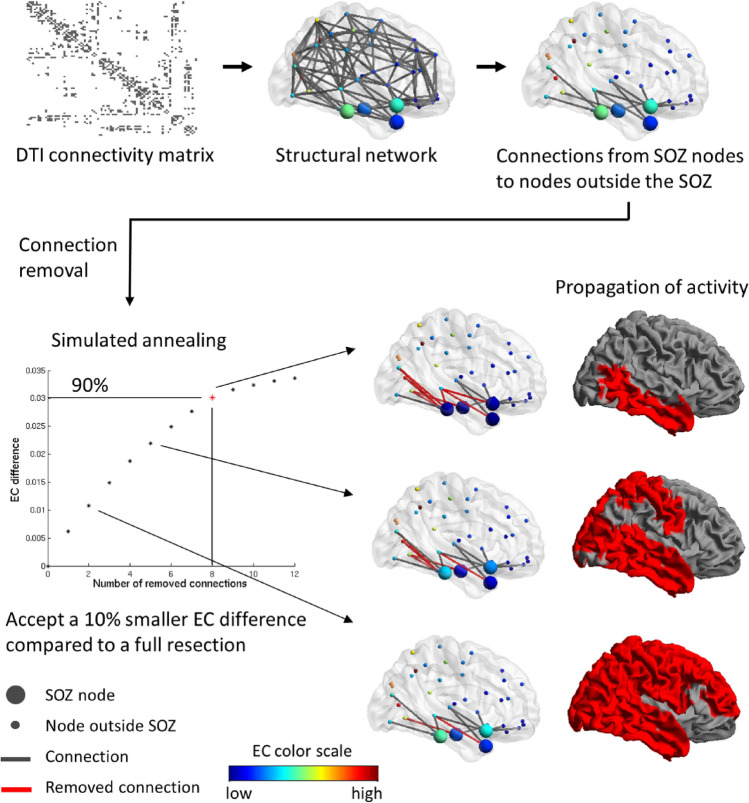Figure 2.
Workflow of selecting the connections to remove for each patient. The patient’s DTI connectivity matrix of white matter tract density between 92 ROIs is thresholded and binarized to a connectivity density of 11%. This connectivity matrix is the basis for the structural network. Subsequently, the connections from SOZ nodes to nodes outside the SOZ are identified—they were all severed in the surgery. Those connections are candidates for the virtual resection in our model. For each number of removed connections, the optimal choice of connections is found using simulated annealing. Simulated annealing optimizes for those connections that upon removal result in the largest EC difference of the SOZ. After the maximal achievable EC difference has been found for each number of removed connections, the number of connections yielding 90% of the EC difference compared to the maximum (when removing all connections) is found and removed. Because removing the first few connections has a larger effect than removing further connections, a relatively large number of connections can be spared yet still achieving an almost maximal effect. The rationale behind the method is illustrated with the propagation of activity (red brain regions indicate active regions at the same time after seizure onset): removing the connections that decrease the EC of the SOZ results in a decrease in speed with which activity propagates. Parts of the figure were visualized with the BrainNet Viewer toolbox (Xia et al. 2013) (http://www.nitrc.org/projects/bnv/).

